How to transfer the outlet: instructions for moving the outlet to another location
Comfortable operation of electrical appliances largely depends on how conveniently the electrical outlet is located. It often happens that when the interior is changed and when new equipment appears, the previous layout of the connection points is no longer satisfied.
You can solve the problem on your own. Let's take a closer look at how to transfer the outlet to another location and what to consider when connecting it. To help the home craftsman, the material contains themed photographs and videos.
The content of the article:
Socket Transfer Safety
Work on the transfer of outlets is not particularly difficult either organizationally or technically.
But dealing with elements electrical wiring It is important to ensure the highest level of security.
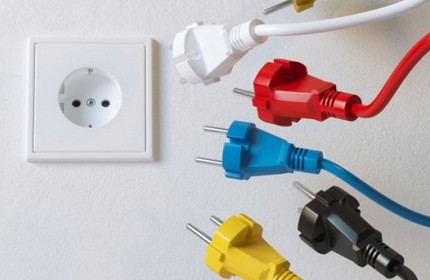
When connecting independently, it is important to observe the four main rules:
- It is allowed to connect the apartment electrical outlet using a VVGng power cable with a cross section of at least 1.5 mm2.
- According to the NBP and GOST, cable laying is allowed only in the vertical and horizontal directions. Horizontally laid routes are positioned, having withstood 200 mm from the ceiling level and 100 mm from beams and cornices, and vertical ones at a distance of 100 mm from door and window openings, as well as room corners.
- Devices have above ground level within 50-80 cm. It is not allowed to place them closer than half a meter from radiators, steel pipelines and gas stoves.
- All connections and branches of the electrical cable must be made through designed for this purpose. boxes, or in the cases of electrical devices, which include sockets.
Before moving the outlet to another place, you need to decide where the junction box is equipped, from which the "old point" is powered. Of key importance is also what metal the veins of the old electrical wiring are made of.

To simplify installation before starting work, experienced craftsmen recommend preliminary scheme. This will allow you to determine the most rational option for placing the connection point. Based on the scheme, it will be easy to determine the area within which hidden wiring is not laid.
Knowing the layout and the main operational parameters of the in-house electrical wiring, installation work can be performed with minimal financial and labor costs.
Ways to migrate a connection point
There are two simple methods that allow the transfer of sockets without destroying the wall decoration:
- By creating a loop - involves the creation of a jumper from the old "point" to the new connection point.
- By lengthening the wire - involves the extension of the electric line in the cavity of a new gate.
If the new selected location is much further than the previous one, you can make a full replacement of the entire line by laying a separate wire from the junction box located at a slight distance. But, unlike the two methods described above, laying a new line requires large-scale repairs.
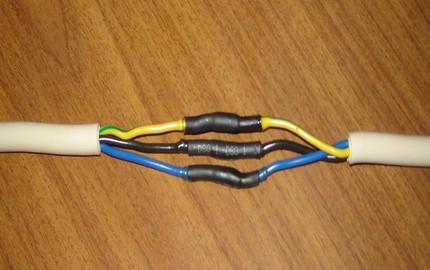
Choosing loop method When connecting a new outlet, keep in mind that such a connection is very unreliable for installing three or more power points. If one section or socket is damaged, the entire serial chain of devices will be inoperative. And, according to the rules of the PUE, it is not allowed to be used to power powerful electrical appliances: microwaves, electric stoves, refrigerators, washing machines, etc.
Another negative side is that when connecting two outlets with a single loop, the current load sequentially passes from one device to another. And therefore, when several devices are connected to the sockets connected via jumpers at the same time, the voltage for their operation may not be enough.
Wire Extension Options
When lengthening a new wire, the connection of its ends can be performed using one of several acceptable methods. The choice of installation method depends on the material from which the cores are made, their cross-section and the number of conductors.
Option # 1 - Using Terminals
Two of the simplest connection methods to use are spring terminals and terminal blocks. Spring terminals are equipped with a lever mechanism.
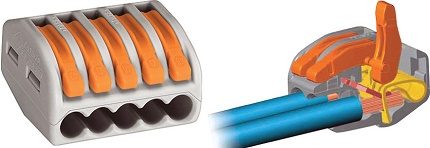
Spring terminals can be used for both copper and aluminum conductors. On sale there are disposable pads that cannot be repaired, and reusable spring wagons, with which you can repeatedly disconnect the contact.
Terminal blocks should be selected with an inlet, the diameter of which corresponds to a given cross section of the cores.
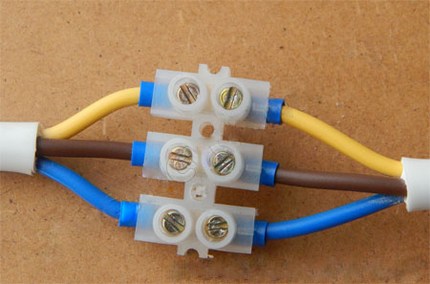
Terminal blocks should not be used to connect an aluminum cable. Aluminum is a brittle metal that can be damaged when tightened.
Option # 2 - fixation with plastic caps
This method involves the installation on the ends of the connecting wires insulating clamps (PPE). Plastic caps are made of non-combustible material, which eliminates the likelihood of spontaneous combustion of the wiring at the core twist.
The use of caps of different shades is convenient for creating color markings when switching cores of the "phase", "zero" and "ground".

Option # 3 - by twisting and soldering
The highest quality of all methods of connecting the cores is welding. But for its implementation, you need to be able to work with a soldering iron.
To do this, strip the ends of the cable to be connected, twist them together and immerse them in molten solder. The twisted ends are lowered into a solder bath, and after cooling, they are wrapped with insulating tape.
Some "craftsmen" to speed up the process of cooling the solder, immerse it in cold water. This should not be done for the reason that with the resulting temperature difference, microcracks occur on the metal surface, which impair the quality of the bond.
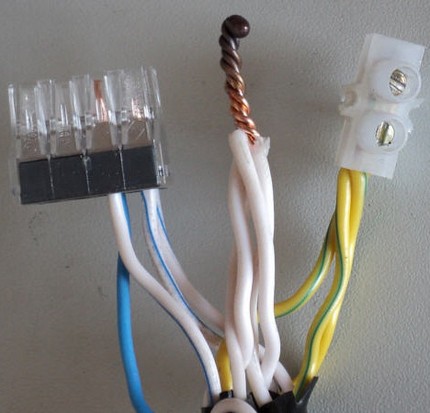
Loop technology
The loopback method is the safest of all options. It involves not just moving the old outlet up or down, but creating a new “point” in the immediate vicinity of the old one.

The only drawback of such a connection is that the cable from the socket to the socket is laid horizontally. Knowing that traditionally branching to the same switches and sockets is laid along a vertical route, because of its forgetfulness, you can inadvertently damage the wire.
In addition, if one of the wires is damaged in the switching place, then all the elements that follow it will stop working. And therefore, the fewer connection points the system will include, the more reliable it will be.
Selection of required materials
When using this method, material costs are minimized.
In addition to acquiring the newest outlet for work, it is necessary to prepare:
- wire of appropriate section;
- plastic socket;
- hammer drill with a crown D70 mm;
- indicator screwdriver;
- pliers;
- hammer;
- flat screwdriver;
- braiding tool.
The wire itself is not necessary stow, and can be laid in an open way using a cable channel.
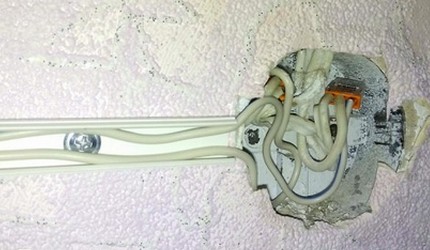
The choice of the model of the sapling depends on the base material into which it is supposed to be embedded. For concrete and brick walls, ordinary plastic “glasses” are chosen, and for drywall substrates - models equipped with spreader feet.
Niche production and installation of a socket
Before moving the hidden socket to another place, you need to prepare a place for installing a socket and make a strob for laying a section of the electrical network. Having outlined the location of the future connection point, a hole is drilled using a crown.
For lack of such, you can use a hammer drill equipped with a hammer drill, or grinder. In this case, first holes are drilled along the marking contour, and then individual fragments of wall material are chipped with a chisel.
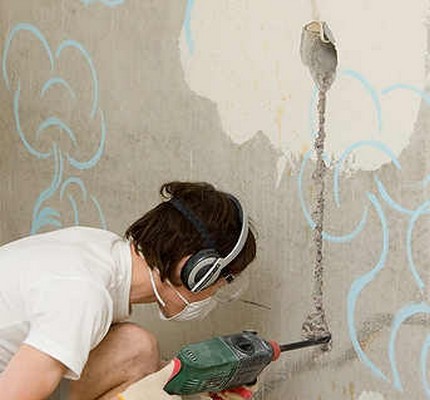
A “glass” is immersed in the prepared niche. An electric cable coming from the junction box is led through its rear wall.
In the concrete wall, the undergrowth is fixed with a gypsum mortar. After the mixture has hardened, the product is cleaned of gypsum residues, and its internal walls are wiped with cloths. To fix the undersocket into a plasterboard or wooden base, the “glass” is immersed in a niche and fixed with the help of side spacers
Connect a new point
Having measured the cable of the required length to power the new point, one end of it is brought to the terminal blocks of the old outlet, and the second to the contact part of the new "point". Zero, phase and ground wires are connected in parallel directly in the contacts of the outlet.
To prevent a short circuit between the conductors, each core is insulated in a plastic sheath. When connecting the cable, it must be removed. To facilitate the task will help the use of a cross knife, which is easy removes insulation without damage to the core.
The work of cleaning the braid should be done as carefully as possible, because if the core turns out to be damaged or defective, it will certainly “show” itself very soon.
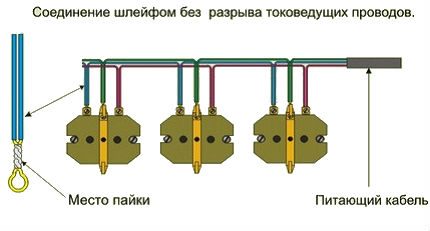
When dealing with a PE conductor, keep in mind that according to the EMP, it is important to maintain its continuity. Indeed, in the event of a broken grounding conductor on one of the outlets, all other devices will be ungrounded.
Having completed the connection of the zero, phase and grounding conductors, it remains only to fix the working part of the product in the mounting box and install the decorative cover.
Socket transfer by extending the wire
In an effort to simplify the work of transferring the outlet, a method is often used in which the wire is extended to the required length, and the “glass” of the old outlet is used as an auxiliary junction box.

The houses of the old building used aluminum wiring. But modern requirements dictate cable laying with a cross section of 1.5 mm or more2 with copper conductors including ground.
Extension of the electric line in a new gate cannot be carried out without partial destruction of the wall. But even under this condition, this option of transferring the outlet is more preferable than the loop method.
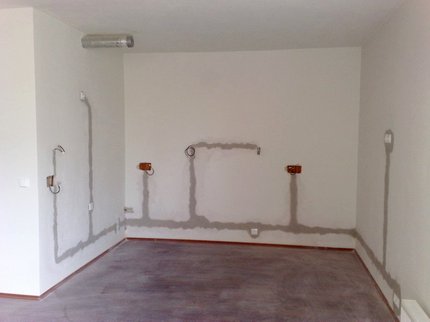
The sequence of actions when extending the wire:
- Disconnect the outlet group from the network, cutting down the circuit breaker on the apartment panel.
- Using an indicator screwdriver, check for current in the terminals.
- The decorative cover is removed from the old outlet, the body is pulled out of the strobes.
- Using a simple pencil, they outline the line for laying the strobe.
- On the intended line with a puncher or grinder, make a strob.
- By means of a crown, a hole is hollowed out for the installation of a socket.
- By connecting wires, lengthen the line.
- In place of the old mounting block, a junction box is installed, in the cavity of which the places of fastened cores are laid.
- In the hole made, a rosette is installed.
- The free ends of the elongated wire are connected to the terminals of the socket block.
- The connected outlet block is buried in a “glass”.
- A decorative panel is mounted on the installed outlet.
When using the old socket as a junction box for building wires, contact of the joint with putty should be avoided.
Some craftsmen for this purpose cut the size of plasterboard to fit the size of the “glass”. First, it is attached to the front face of the undergrowth using liquid nails, and then a liquid layer of putty mortar is applied from above.
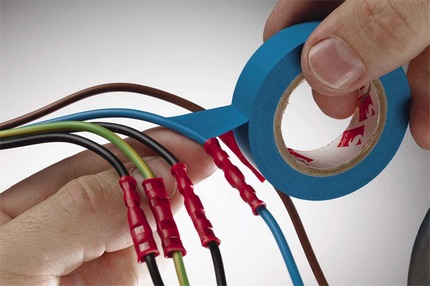
The main mistake made by beginning masters is when the “grown-up” conductor is laid back into the old shtroba, and then it is covered with gypsum mortar or alabaster. But, by shutting down access to connections, they do not take into account that in the event of a breakdown and incapacitation of a network section, it will not be possible to quickly fix the situation.
If a situation arose when the connection point needs to be moved closer to the distribution box, the operation is even easier. After all, the wire will only have to be shortened. To do this, under the installation of the mounting block, make a hole in the wall. Using a knife, shorten the previously laid line. Installation of the product is carried out in accordance with the above recommendations.
Conclusion of a new branch
This method involves spending more time and effort, but allows you to get the most secure transfer of the electrical outlet.
A method involving the conclusion of a new line is often used in panel houses, where the wires are literally walled into a concrete wall, and therefore it is not possible to remove them. In this situation, they are simply de-energized and left in place, and to supply a new outlet, lay a separate strobe.
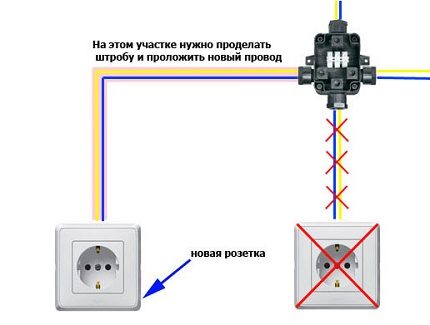
Wall chipping and “glass” mounting
To withdraw a new line, the first thing they do is turn off the electricity in the room where the work will be carried out. On the wall with the help of a ruler and a pencil, they outline the route along which a new strobe will be laid.
On the intended route, using a puncher or grinder, they cut out a strob in the wall. The depth of the furrow is such that the wire laid in its cavity after installation is not protruded above the surface.
For the installation of a new connection point in the intended place, a “socket” with a depth of 50 mm is hollowed out using a hammer drill equipped with a crown. Niche walls are carefully cleaned from building chips and dust.
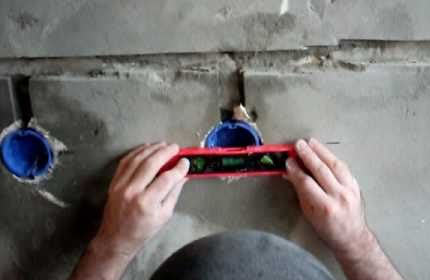
The installed "glass" should not protrude above the surface. If the depth of the niche is not enough, you can carefully cut the back wall of the undergrowth.
Cable management and terminal connection
A cable is laid in the created recess, fixing it every 5-7 cm with plastic clamps or alabaster.
Opening the junction box, from which the “old point” was powered, find the connection point of the output cable with the wire going to the former outlet, and disconnect the wires.After that, the old line is dismantled along with the outlet. If the old shtrob was able to be opened, then after removing the wire it is sealed with gypsum or alabaster solution.
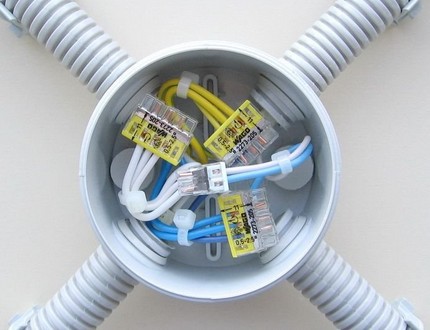
The connected unit is buried in the mounting box and fixed with bolts. When installing the outlet, it is important to prevent the slightest backlash. Otherwise, over time, it will fall out of the “socket” with the plug.
Since it is difficult to ensure a tight fit of the cores inside the box, it is advisable to connect the wires not by twisting, but by installing terminal blocks, spring terminals or plastic caps.
When laying a new conductor, you need to ensure that at both ends there is a small margin. It will be required in order to create a high-quality electrical connection.
The free stripped ends of the cores are connected to the outlet block of the new “point” through screw or spring terminals. When connecting via terminals, they are guided by the rule that the phase wire is installed on the left terminal, the zero wire on the right. The grounding conductor is connected to a terminal equipped with a "antennae", which is located on the device.
The connected working unit is installed in the socket and fixed with spacers and clamping screws. Mount the decorative panel on top.
Conclusions and useful video on the topic
The video will talk about how to transfer the outlet without dust:
What to consider when transferring a connection point:
There is nothing complicated in moving the outlet to a new place. The main thing is to adhere to the recommendations of experienced electricians listed in the article and observe safety precautions.
If you have any questions while reading the information or there are recommendations that will help the novice master to deal with the transfer of the outlet, please write them in the box below.

 How to make two from one outlet and how to properly conduct an outlet from an outlet
How to make two from one outlet and how to properly conduct an outlet from an outlet 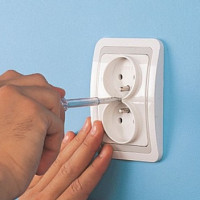 How to connect a double outlet: installing a double outlet in one socket
How to connect a double outlet: installing a double outlet in one socket 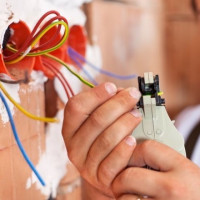 How to install and connect an outlet with grounding: learn to ground the outlet
How to install and connect an outlet with grounding: learn to ground the outlet 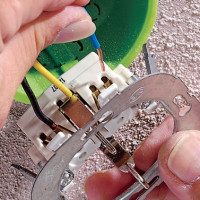 How to change and remodel the outlet: step-by-step instructions on how to replace
How to change and remodel the outlet: step-by-step instructions on how to replace 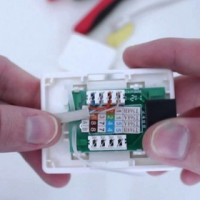 How to connect a telephone socket: connection diagram and installation rules
How to connect a telephone socket: connection diagram and installation rules 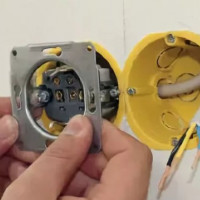 How to install a socket in drywall: installation rules and tips for installing a socket
How to install a socket in drywall: installation rules and tips for installing a socket  How much does it cost to connect gas to a private house: the price of organizing gas supply
How much does it cost to connect gas to a private house: the price of organizing gas supply  The best washing machines with dryer: model rating and customer tips
The best washing machines with dryer: model rating and customer tips  What is the color temperature of light and the nuances of choosing the temperature of the lamps to suit your needs
What is the color temperature of light and the nuances of choosing the temperature of the lamps to suit your needs  Replacement of a geyser in an apartment: replacement paperwork + basic norms and requirements
Replacement of a geyser in an apartment: replacement paperwork + basic norms and requirements
Recently moved to a new apartment. Interior partitions - panels, except for the bathroom with the toilet, there is something else (until they figured it out). It is clear that not all sockets are in place, but in some places they are catastrophically small. I was going to transfer a couple of pieces and make a few extra ones in the kitchen. But the representative of the management company, from whom I asked for the wiring diagram in the apartment, told me that it is absolutely impossible to shatter the walls for pulling wires! I could not refer to the regulatory acts, but said that he would inform the management about my plans, and there could be troubles. Tell me, is it really impossible to ditch channels and sockets for sockets in panel walls? Or have I been misled to order this work by an electrician of the Criminal Code?
If you have a panel house, then he is right - you can’t ditch the walls in such a situation. The panels are load-bearing and if each tenant makes holes, it will be bad. In Moscow, this is expressly prohibited by the government decree “On the procedure for the reconstruction of premises ...” p.11.11, in other regions, I think, too.
Good day, Sergey. A company representative correctly cares about maintaining the bearing capacity of the walls. Instead of verbal negotiations, you will have to get official permission.You should draw up a preliminary design for the transfer or installation of additional outlets.
When preparing a project, keep in mind that there is a set of rules 256.1325800.2016, which stipulates the conditions for laying wires. Moscow rules are even tougher - they prohibit touching, for example, the horizontal seams of internal panels. You can read the details in the screenshot attached to my answer.
Useful stuff. I myself have been working in this area for several years, but I did not know many things. It is interesting to read and learn something new for yourself. For example, the loopback technology for transferring electrical outlets is set out very competently that even a student can understand and perform. Now there are many sites with similar themes, but I still take this one by pencil.
In general, for example, I never liked the location of the outlets in the apartment. True, I myself do not really understand this, so I somehow did not climb and change. Yes, and I heard that the services of an electrician are now expensive. After reading this material, I took a lot of notes. Maybe someday I’ll get together and still reinstall. I think that not everyone is happy with how they are standardly located.